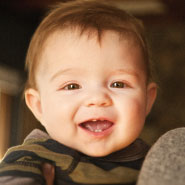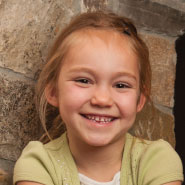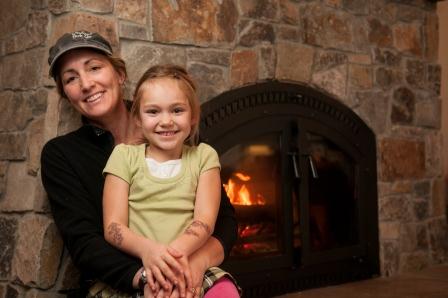KVH Contributor*
Dr. Elise Herman
KVH Pediatrics

There are lots of parenting books and websites out there, but in trying to keep it simple, here are some tips on how to raise a great kid:
Talk and sing to your baby while you hold, feed or play with him; eye contact and face to face interaction promotes brain development.
Start books early with your baby and read to her every day – make it part of the bedtime routine. If you speak a second language at home, read books in that language, too.
Get outside with your child every day (unless absolutely too cold, icy, etc.) – good for kids and adults! Getting outside is healthy exercise and good for us emotionally as well.
Start family meals with your child as soon as she starts eating solids (4-6 months) and continue through adolescence. Family meals promote healthy eating, connection with each other and have been shown to decrease risky behaviors in teens.
No screens (other than looking at photos or doing video chat such as Skype, though even this should be limited) until 2 years. Avoid fast moving content such as cartoons and stimulating videos, which has been shown to lead to trouble paying attention later in life. Slow moving content such as Mister Rogers/Daniel Tiger makes more sense to kids. Avoid YouTube especially if you are not watching with your child since you do not know what will be ‘recommended’ for him to ‘watch next’.
Put your phone or other devices away when with your child. We adults miss out on valuable interactions with our kids when we are distracted by technology. We are sending a clear message to them that they are not as important as the phone, etc. And of course our kids want to imitate us and be on a phone, too – not what we want to encourage!
Establish routines for meals, naps and bedtime. We all thrive with a predictable routine.
Play with your child – really play! Channel your inner child, pretend, be silly, play dress-up, play tag. Let your child lead and encourage unstructured play with her peers; the adults can be nearby but not directing/controlling what happens. Play has been called “the work of childhood” because it is so important to kids.
Praise good behavior right at the time you see it. Ignore the little things he does “wrong” but be consistent if there is a real problem – hitting, disrespect, etc. Spanking is not effective discipline but having a “time-out”, taking away privileges and natural consequences (for example if a child throws food off the high chair tray and he has been told not to, meal time is over) are. Stay calm; yelling is scary and bewildering to kids.
Chores make kids feel valued and also encourage a sense of family responsibility. Kids learn how good it feels to help out and to be counted on. When they (eventually!) leave home, we want them to have the skills to be independent adults. Yes, that means scrubbing the toilet!
Wait until your child is at least 14 years old to have a cell phone (Microsoft CEO Bill Gates’ recommendation!), and many experts suggest a flip phone (no Internet) for at least one year to see if the child is responsible enough for a ‘smart phone’. Better yet, ask why she ‘needs’ a smart phone. Given the risks of social media (anxiety, depression) and the negative effect on reading, getting outside, family time, etc. it is reasonable to avoid the smart phone until much older. Your child may not be happy, but is a parent’s job to do what is best for the child, not to make him happy.
Elise Herman, MD, is the mother of 2 terrific kids who are by no means perfect!
Managed by Kittitas Valley Healthcare, HealthNews does not provide medical advice. For medical advice, please see your healthcare provider.







